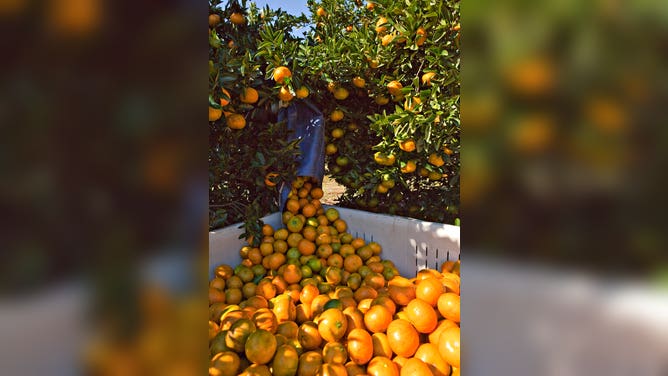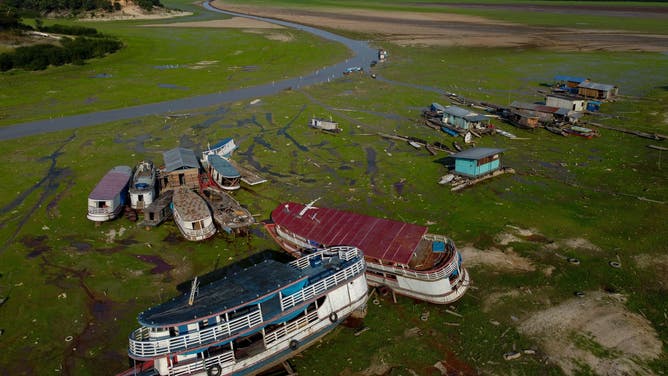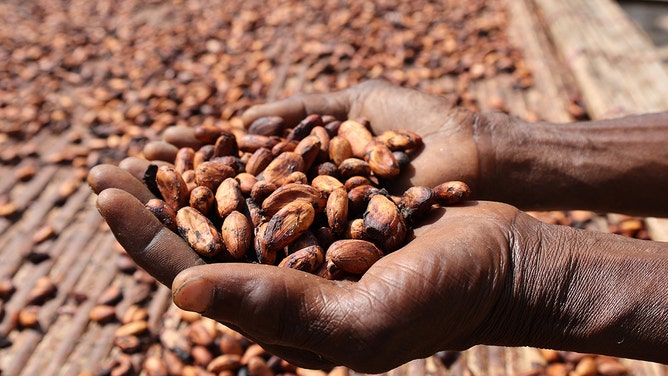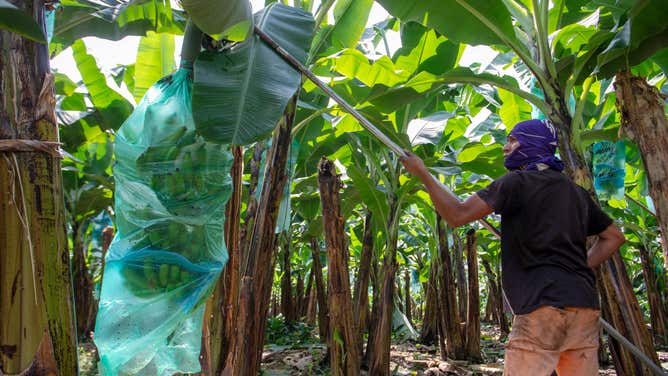El Nino short term financial wins followed by losses in trillions
Scientists looked at the two worst El Niño years in terms of weather and found that economies suffered and continued to lose ground at five years.
How much could El Nino cost you and your wallet?
FOX Business Analyst Scott Martin takes a look at a new report that details trillion dollar economic losses worldwide from past El Nino Events and drops in personal wealth.
El Niño-spurred weather extremes take a toll not only on the U.S., but also on our wallets.
In a study published in the journal Science, researchers looked at the economic impacts of the two strongest El Niño cycles in the past 60 years: 1982-1983 and 1997-1998. They found exceptional economic losses even to personal income.
"We've had wages pull back 3% to 5% over the next several years beyond an El Niño year, and that's typically because demand falls," FOX Business Analyst Scott Martin told FOX Weather. "So, as wages come down, that's typically because service revenue comes down and demand falls, and therefore there's not as much to pay our workers."

File: A man looks at the contents of his wallet.
(Artem Beliaikin / Unsplash / FOX Weather)
Commodity prices tend to go up as the weather takes a toll on crops.
"Look at orange juice, cocoa, chocolate and things like that," Martin said. "Less supply means higher prices for those commodities. Therefore, these businesses have less money to pay their workers and therefore wages go down."
COCOA PRICES SURGE TO 44-YEAR HIGH AS EXTREME RAINFALL DEVASTATES CROP IN WEST AFRICA

File: A worker dumps freshly picked oranges into a bin at an orange grove in Winter Garden, Florida, U.S., on Tuesday, Jan. 5, 2010.
(Matt Stroshane/Bloomberg / Getty Images)
El Niño means global losses
Globally, the losses become unimaginable.
"The persistent effect of ENSO (the El Nino/Southern Oscillation cycle) implies that historical El Niño events have permanently altered the income trajectories of teleconnected countries, potentially generating large economic losses," researchers wrote in the study.
NOAA defines teleconnections as links between weather phenomena, such as climate patterns that span thousands of miles, to widely separated places on the Earth.
EL NINO'S ODDS FOR ‘HISTORICALLY STRONG’ EVENT INCREASE; COULD LINGER THROUGH SPRING

The map indicates the percentage shift in GDP as a result of the 1997-98 El Niño.
(Chris Callahan/Dartmouth College / FOX Weather)
Losses compound over time
About 56% of countries experienced significant declines in growth 5 years after El Niño, the researchers discovered. The average decline was 2.3%.
That drop is after the 1.6% drop in economic growth in the year of the event. The study found that Peru's economy, a particularly teleconnected country, declined 7.1% over 5 years. That loss meant the income for the average Peruvian did not see the projected 27% increase.
Across the tropics, the study pointed out similar losses in countries like Ecuador, Brazil, and Indonesia, which lost 5% to 22% of their GDP due to the 1997-98 El Niño.
Global losses due to El Niño in 1983 came in at about $239 billion but ballooned to $4.9 trillion after five years, according to the study. The 1983 losses were $455 billion and grew to $7.5 trillion. Authors factored in benefits from the preceding La Niña events. Otherwise, the loss was projected to be $9.7 trillion.
EL NINO'S FINANCIAL TOLL COULD COST TRILLIONS AND PERSIST FOR YEARS

File - In this aerial view, boats are seen stranded in Aleixo Lake due to the severe drought west of Manaus, Amazonas State, on September 29, 2023.
(MICHAEL DANTAS/AFP / Getty Images)
Only short-term ‘winners’
In the short run, some savvy consumers and investors may benefit, starting with commodities such as sugar, wheat and orange juice expected to take a hit.
"There's actually commodity funds nowadays that we've been putting our clients into that benefit from El Niño years," Martin said. "As the commodity prices go up, because of less supply, there are actually funds that go up in value because of the fact that commodity prices are higher."

File: A Ghanaian farmer shows dried cocoa beans at a plantation in the East Region, Ghana, on Nov. 15, 2021.
(Xu Zheng/Xinhua / Getty Images)
A Bloomberg analysis showed that the year after the past nine El Niño events, agricultural commodities significantly outperformed the S&P 500. The S&P gained 16.5% on average, while the same investment in the S&P Agricultural Index gained 24.4%.
Temperatures in certain parts of the country are generally warmer in El Niño years, which would translate to lower winter heating bills. A warmer winter, and in some areas drier, means less bundling up too.
STRONG EL NINO WINTER: WHAT KIND OF WEATHER YOU CAN EXPECT
"Now what we're starting to see in El Niño years is that the prices of those things will go down because demand falls because it's not as cold, and it's not as snowy," Martin said. "And therefore, you're going to see apparel prices and things like that come down, I think, over January and February."
FEWER HOLIDAY BARGAINS EXPECTED DUE TO LAST YEAR'S MILD WINTER ANALYST WARNS

File: An after Christmas sale in Mateo, California.
(Michael Macor/The San Francisco Chronicle / Getty Images)
More than half the countries worldwide suffered, independent of wealth
A country's wealth does not make its economy invulnerable to El Niño, authors of the study concluded.
"El Niño’s influence varies with income, with low-income countries suffering more damage than high-income countries," researchers wrote. "The majority of highly teleconnected countries are lower-income, tropical countries … the strongest effect of El Niño (is) in these countries. Importantly, however, high-income countries still experience statistically significant negative effects."

File: An employee of the Thalia banana farm, works in El Triunfo, Ecuador, on March 31, 2022.
(MARCOS PIN/AFP / Getty Images)
Climate trends show growing losses
Losses to future El Niño events could grow, according to the study.
The scientists calculated future economic losses, assuming a "middle-of-the-road" greenhouse gas emissions scenario, at $374 trillion over the rest of the century.
EL NINO, CLIMATE CHANGE TO LIKELY MAKE NEXT 5 YEARS HOTTEST RECORDED ON EARTH, WMO SAYS
"Even independent of global warming, economic growth is more sensitive to climate variability than previously understood," researchers wrote. "The sensitivity of economic growth to climate variability implies more severe losses from warming than previously assumed by some climate-economy models."
Researchers said that their findings suggest that while climate mitigation is essential to reducing economic vulnerability, more resources should be devoted to adapting to El Niño events.
